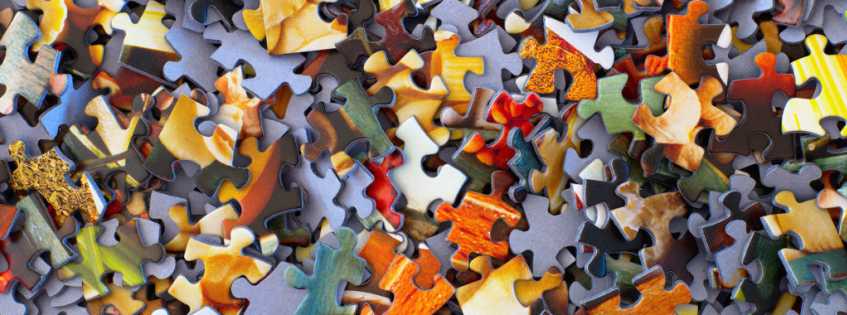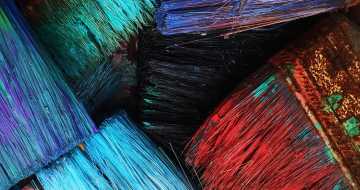- All Management Learning Resources
- innovative teams

Executive summary
In most professional settings, doing innovative, meaningful work requires effective collaboration with a team. Impactful creativity rarely can happen in complete isolation – ideas must be vetted, developed, and tested by peers. Furthermore, a well-composed work team can boost the number and quality of unique ideas each member presents (Parke, Seo, & Sherf, 2015). This CQ Dossier will review the current state of psychological research on how to compose innovative teams, boost team creativity and and minimize conflict within an innovative team.
Contents
- Executive summary
- What to consider when composing innovative teams
- How to build innovative teams: Creativity is not enough
- Hire people with high levels of creativity
- Prefer team members with tolerance for risk
- Diversity leads to more creative and Innovative teams
- Diversity has different dimensions beyond race and gender
- How to manage diversity-related conflict in innovative teams
- Key take-aways
- References and further readings
What to consider when composing innovative teams
A properly formed, well-managed innovative team can develop a warm, encouraging “culture of creativity” that breeds bold, impactful ideas. The interpersonal nature of most creative work can make it difficult to go about hiring innovative, distinctive thinkers. If you want to compose an innovative team of professionals where creative, innovative thinking is of paramount importance, selecting for “creative types” is not enough (Pirola-Merlo & Mann, 2004). Team members must be
- capable of working with one another,
- examining each other’s ideas fairly, and
- encouraging one another to continue to grow and innovate.
In addition, many of the factors that help encourage creativity – such as team diversity – can lead to unwanted side effects, such as an increased propensity for conflict (Bassett-Jones, 2005). Having the ability and knowledge to deal with such conflicts is of critical importance to keep team creativity on a high level.
How to build innovative teams: Creativity is not enough
An effective creative team must have numerous creative members in its ranks. However, hiring and placing employees on a team based on their creativity is not sufficient. Creative work as a member of a team is distinct from more solitary creative work. Many otherwise innovative people become self-conscious when sharing ideas as part of a group; some incredibly creative people are not skilled in providing encouragement and useful critiques to other creative peers (Perry-Smith & Shalley, 2003).
Furthermore, being innovative is not a guarantee that an employee will be a strong leader, reliable collaborator, or that they will can provide an organized supporting role. Accordingly, it is vital that you select team members who are creative, but also capable of working well on an innovative team.
Open-mindedness and perspective taking skills
In terms of personality, select team members who are open-minded, and who crave new experiences and challenges. Innovative team members will typically prefer dynamic jobs that involve taking on a variety of tasks. People who require stimulation and who enjoy deep thinking will also be advantageous to an innovative team. Team members who are skilled at “perspective taking” – imagining the feelings and thoughts of other people – can help facilitate discussions and develop others’ ideas in a productive direction.
Extraversion and listening skills
Extraverted, confident team members will be more adept at sharing their novel ideas with the group (Parke, Seo, & Sherf, 2015); however, make sure that members are just as adept at listening as they are at sharing their own thoughts and reactions.
Emotional intelligence and agreeableness
General interpersonal skills are also beneficial to a creative team. When possible, compose teams of people who are emotionally intelligent and moderately agreeable – but not so agreeable that they allow other people to speak over them (Barczak, Lassk, & Mulki, 2010). Shyness and reticence to share one’s ideas are disadvantageous on a team intended to do creative work.
Balanced level of conscientiousness
Extremely high conscientiousness can be detrimental to such groups as well – while being organized and meticulous are generally beneficial to an organization, innovative teams must have some room to “be messy” and go about business in unconventional ways.
Hire people with high levels of creativity
Though many other attributes are important, hiring people with high levels of creativity remains an essential component of innovative teams. Creative people can be identified using formal, empirically tested measures of creativity, or by looking at employees’ past performance. Past behavior is often a better predictor of future performance than an assessment is, so select team members who have demonstrated distinctive, paradigm-breaking thinking in the past (Jaiswal & Dhar, 2015).
Prefer team members with tolerance for risk
As mentioned in other CQ Dossiers, candidness and a tolerance for risk are also major predictors of creative thinking, and ones that make a team member especially likely to speak-up with ideas and criticism in a group setting (Kraiczy, Hack, & Kellermanns, 2015). For a team to be productively innovative, members must be capable of working with other people and nourishing everyone’s creative potential. As a manager, make sure to select creative employees who can accept criticism and work with other people.
Diversity leads to more creative and Innovative teams
Across decades of research, in a variety of settings and industries, research findings have been consistent: diversity leads to more creative and innovative teams (Jehn, Northcroft, & Neale, 1999). Racial diversity and gender diversity have been studied a great deal, in particular; numerous experiments and organizational observations have demonstrated that having people of a variety of racial backgrounds and genders on a work team leads to a greater variety of new ideas, and more complex, deep thinking by all team members (Friedman, Friedman, & Leverton, 2016).
An array of unique backgrounds helps increase the breadth of “shared knowledge” present on a team; in addition, being a member of a marginalized group brings with it unique perspectives and experiences that less marginalized group members rarely possess.
Diversity has different dimensions beyond race and gender
A growing body of research demonstrates that other sources of diversity are massively beneficial to compose an innovative team, as well.
- Physically or mentally disabled team members have unique experiences interacting with the physical world, and with technological interfaces; often their expertise is invaluable in developing a new product, piece of software, or way of doing business (Boehm & Dwertmann, 2015).
- Members of ethnic minority groups, immigrants, and multilingual people have also been demonstrated to boost innovation within organizational teams (Perry-Smith & Shalley, 2014), as have LGBTQ people.
While “diversity” often involves the intentional inclusion of marginalized and minority voices, it bears mentioning that all individuals have unique, diverse experiences that can deepen a team. Though white, male professionals are typically among the more privileged, a white male employee may bring to the table unique experiences of class background, mental health status, disability status, sexual orientation, or personal history. Every person has an element of their background or identity that makes them unique. A productive, innovative team harnesses the diversity of all its members. Embracing the diversity of all members – including less marginalized ones – can help reduce diversity-related conflict, which is described in more detail below (Rice & White, 2015).
How to manage diversity-related conflict in innovative teams
Some degree of team conflict is inevitable, especially when a team is comprised of a variety of individuals with different backgrounds and creative tastes (Bassett-Jones, 2005). What’s more, innovation is often a risky process, and one that requires substantial discussion and criticism, heightening the risk of arguments and hurt feelings. An effective manager must know how to prepare for these issues.
Diversity-related conflict is often particularly heated; when two individuals do not understand one another, they run the risk of being seen as prejudiced, or they may feel unfairly stereotyped (Jehn, Northcraft, & Neale, 1999).
Communication issues can also arise easily when group members come from different cultures or subcultures, or have different native languages. Tension and communication issues can quash innovation, leaving everyone feeling on-edge and afraid to risk sharing a bad or inappropriate idea. An effective manager must work to prevent this dynamic the moment the team is formed.
Foster a culture of embracing and celebrating diverse perspectives
To avoid high-intensity conflict within diverse, creative teams, foster a culture of embracing and celebrating diverse perspectives. From the outset, establish that team members will bring different experiences and identities to bear on work projects, and acknowledge that conflicting views will arise (Huettermann et al, 2015).
Model the ability to accept criticism and admit wrongs
Rather than avoiding discussions of race, gender, sexual orientation, ability status, or other sources of uniqueness, acknowledge that people are different, and that prejudices exist (Jansen et al, 2016). In team meetings, model the ability to accept criticism and admit wrongs. For creativity to thrive, individuals must feel free to speak and share ideas that are imperfect; criticism should be welcomed and carefully considered, as well. One common mistake that managers of diverse, creative teams make is they develop an aversion to conflict – however, disagreements help allow for multiple distinctive perspectives to be aired (Farh, Lee, & Farh, 2010).
Allow disagreement and faciliate challenging discussions
Rather than trying to paper over differences of opinion or moments of discomfort, allow disagreement. Make sure challenging discussions facilitated, somewhat calm, and productive, not nonexistent.
Be patient as it takes time to build innovative and diverse teams
Finally, keep in mind that innovative and diverse teams often have a slow, rough initial period; as team members become more comfortable with one another and as more conflicts are effectively managed, they will come to thrive.
Key take-aways
- Innovative teams must consist of creative people who are also strong collaborators
- A willingness to share ideas, and to accept criticism, are vital on innovative teams
- Diversity improves team creativity, but can also increase the odds of conflict
- All individuals bring some form of diversity to an organization, and all sources of diversity should be celebrated
- Allow team members to disagree and experience mild conflict, and mediate heated discussions rather than avoiding them
Management skills newsletter
Join our monthly newsletter to receive management tips, tricks and insights directly into your inbox!
References and further readings
Bassett‐Jones, N. (2005). The paradox of diversity management, creativity and innovation. Creativity and innovation management, 14(2), 169-175.
Barczak, G., Lassk, F., & Mulki, J. (2010). Antecedents of team creativity: An examination of team emotional intelligence, team trust and collaborative culture. Creativity and Innovation Management, 19(4), 332-345.
Boehm, S. A., & Dwertmann, D. J. (2015). Forging a single-edged sword: Facilitating positive age and disability diversity effects in the workplace through leadership, positive climates, and HR practices. Work, Aging and Retirement, 1(1), 41-63.
Farh, J. L., Lee, C., & Farh, C. I. (2010). Task conflict and team creativity: a question of how much and when. Journal of Applied Psychology, 95(6), 1173.
Friedman, H. H., Friedman, L. W., & Leverton, C. (2016). Increase diversity to boost creativity and enhance problem solving. Psychosociological Issues in Human Resource Management, 4(2), 7-33.
Huettermann, H., De Wit, F., Diewald, J., Boerner, S., & Jehn, K. A. (2015, January). Diversity and conflict in teams: a meta-analysis. In Academy of Management Proceedings (Vol. 2015, No. 1, p. 14259). Academy of Management.
Jaiswal, N. K., & Dhar, R. L. (2015). Transformational leadership, innovation climate, creative self-efficacy and employee creativity: A multilevel study. International Journal of Hospitality Management, 51, 30-41.
Jansen, W. S., Vos, M. W., Otten, S., Podsiadlowski, A., & van der Zee, K. I. (2016). Colorblind or colorful? How diversity approaches affect cultural majority and minority employees. Journal of Applied Social Psychology, 46(2), 81-93.
Jehn, K. A., Northcraft, G. B., & Neale, M. A. (1999). Why differences make a difference: A field study of diversity, conflict and performance in workgroups. Administrative science quarterly, 44(4), 741-763.
Kraiczy, N. D., Hack, A., & Kellermanns, F. W. (2015). What makes a family firm innovative? CEO risk‐taking propensity and the organizational context of family firms. Journal of Product Innovation Management, 32(3), 334-348.
Parke, M. R., Seo, M. G., & Sherf, E. N. (2015). Regulating and facilitating: The role of emotional intelligence in maintaining and using positive affect for creativity. Journal of Applied Psychology, 100(3), 917.
Perry-Smith, J. E., & Shalley, C. E. (2003). The social side of creativity: A static and dynamic social network perspective. Academy of management review, 28(1), 89-106.
Perry-Smith, J. E., & Shalley, C. E. (2014). A social composition view of team creativity: The role of member nationality-heterogeneous ties outside of the team. Organization Science, 25(5), 1434-1452.
Pirola‐Merlo, A., & Mann, L. (2004). The relationship between individual creativity and team creativity: Aggregating across people and time. Journal of Organizational Behavior, 25(2), 235-257.
Rice, M. F., & White, H. L. (2015). Embracing Workplace Diversity in Public Organizations. Diversity and Public Administration: Theory, Issues, and Perspectives, 298.
About the Author






